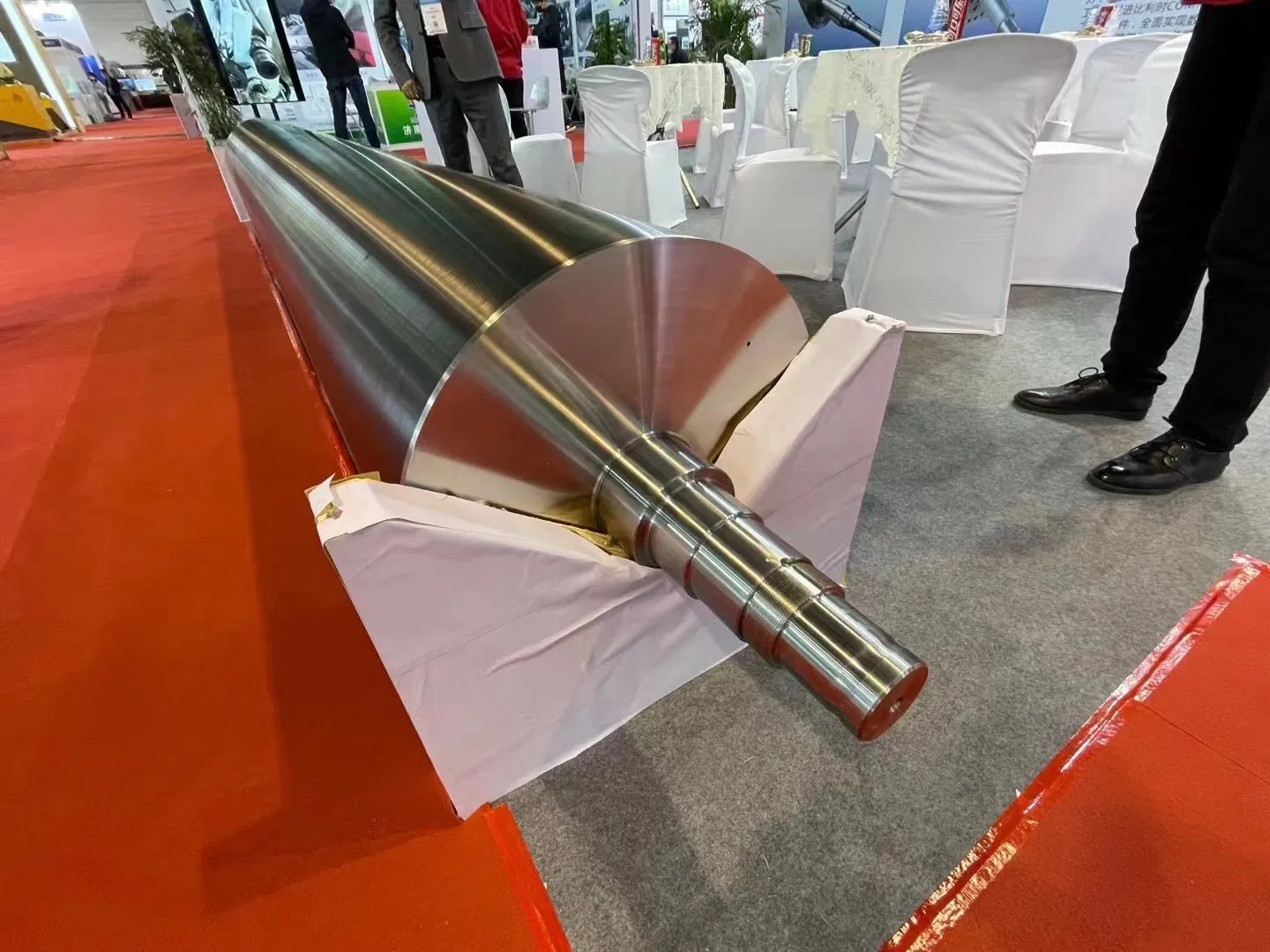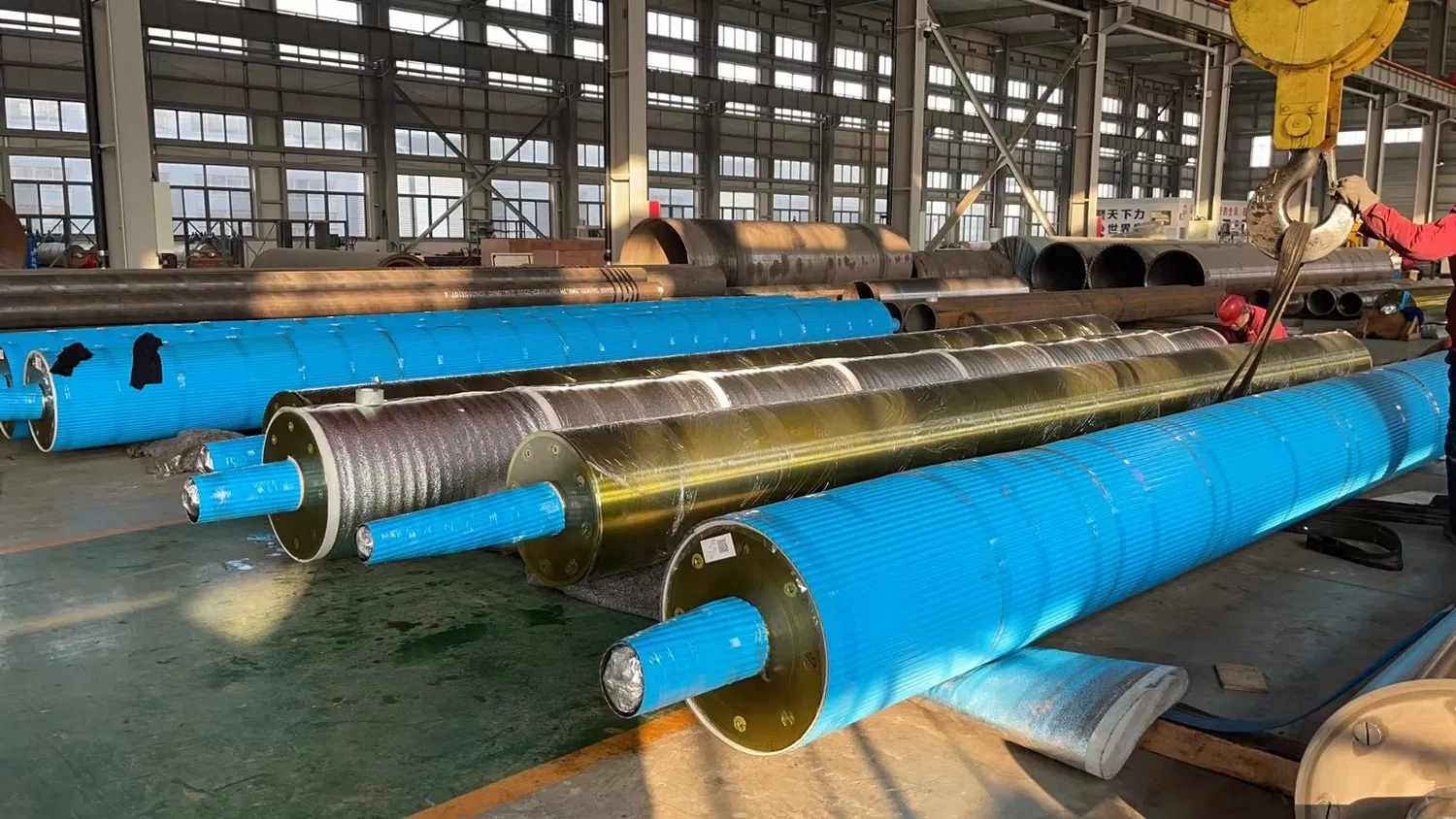In the intricate and high-stakes world of papermaking, the press section stands as a critical checkpoint for efficiency, quality, and profitability. It's here that mechanical dewatering—the forceful squeezing of water from the delicate paper web—takes center stage. This process is vastly more energy-efficient than thermal drying, and its success hinges on one pivotal component: the press roll. The choice of press roll technology, specifically between a blind hole design and a grooved design, is one of the most consequential decisions a paper mill manager or engineer can make. It's a choice that directly impacts everything from machine speed and energy consumption to the final quality and market value of the paper produced. So, which one is truly right for your operation?
To be honest, there is no one-size-fits-all answer. The ideal choice is a nuanced decision, deeply rooted in the specific goals and operational realities of your paper mill. This guide will dissect the design, function, advantages, and disadvantages of both blind hole and grooved press rolls to provide a clear framework for making an informed decision.
The Anatomy of a Grooved Press Roll: A Champion of High-Speed Dewatering
The grooved press roll is perhaps the most recognizable and widely implemented press roll technology, particularly in machines producing bulk grades like linerboard, corrugating medium, and newsprint. Its design philosophy is elegantly simple: provide a direct and continuous path for water to escape the press nip.
Design and Mechanism
A grooved press roll features a series of continuous channels, or grooves, cut into the surface of the roll cover. These grooves can be arranged in a circumferential (like rings around the roll) or, more commonly, a helical (spiral) pattern. As the paper web and press felt pass through the high-pressure nip between the grooved roll and a smooth mating roll, water is squeezed from the sheet.
Instead of being reabsorbed back into the felt or sheet, this water is forced into the low-pressure void of the grooves. As the roll rotates, the water held within these grooves is expelled by centrifugal force and collected in a save-all pan. It's a dynamic, continuous, and highly effective process. The key is that the grooves provide the necessary void volume to accept the expressed water at the exact moment of pressing, preventing hydraulic pressure from building up and crushing the sheet.

Advantages and Key Applications
The primary advantage of the grooved press roll is its exceptional water handling capacity, especially at high speeds. The open, continuous nature of the grooves allows for rapid evacuation of large volumes of water, making it the go-to choice for many of the world's fastest paper machines.
- High Dewatering Capacity: The design is optimized for maximum water removal, which is critical for heavy-weight sheets and high-speed operations.
- Reduced Shadow Marking: Compared to older drilled-through suction rolls, modern grooved rolls significantly reduce the pattern marking (shadow marking) on the sheet.
- Simpler Maintenance: Cleaning is relatively straightforward. High-pressure water showers can typically keep the grooves clear of fibers and debris during operation.
Potential Disadvantages
Despite its strengths, the grooved roll is not without its challenges. The very design that makes it effective can also introduce issues. The land areas (the flat surfaces between the grooves) concentrate pressure, which can lead to a phenomenon known as groove marking—faint lines on the paper sheet that correspond to the groove pattern. While often acceptable for packaging grades, this can be a deal-breaker for fine printing and writing papers.
Furthermore, under extremely high nip loads, the rubber or polyurethane cover material can deform, causing the grooves to partially close. This "groove closure" reduces void volume, compromises dewatering efficiency, and can increase hydraulic pressure in the nip, potentially damaging the sheet.
Dissecting the Blind Hole Press Roll: The Pursuit of Uniform Pressure and Quality
The blind hole press roll, often called a blind-drilled roll, offers a different engineering solution to the same dewatering problem. Instead of continuous grooves, its surface is covered with a precise pattern of thousands of small holes that do not pass all the way through the roll shell—hence, "blind."
Design and Mechanism
The dewatering mechanism for a blind hole roll is a two-step process. In the nip, water is pressed from the sheet into the void of these small holes. Unlike a grooved roll where water is immediately thrown out, the water is temporarily held in the holes by a combination of capillary action and the vacuum created as the hole expands back to its original shape after leaving the nip.
As the roll continues to rotate away from the nip, this trapped water is then purged. This is typically accomplished with an internal, high-pressure water shower that flushes the holes from the inside out (if the design allows) or, more commonly, by a combination of compressed air "doctors" and a suction box (uhle box) that vacuums the water out before that section of the roll re-enters the nip. This cleaning and purging cycle is absolutely critical to the roll's performance.
Advantages and Key Applications
The most significant advantage of the blind hole roll is the uniform pressure it applies to the sheet. Because the land area is much larger and more evenly distributed than on a grooved roll, the pressure profile across the nip is far more consistent. This has a direct, positive impact on sheet quality.
- Superior Sheet Quality: The design minimizes the risk of groove marking, resulting in a smoother, more uniform sheet surface. This makes it ideal for fine papers, printing grades, and specialty papers where appearance and printability are paramount.
- Excellent Performance at Moderate Speeds: It provides consistent, reliable dewatering on machines that may not require the extreme water-handling capacity of a grooved roll.
- Greater Land Area: The large surface area provides better support for the sheet and felt, which can extend felt life in some applications.

Potential Disadvantages
The Achilles' heel of the blind hole roll is, without a doubt, the potential for hole plugging. Fibers, fillers, and pitch can accumulate in the small holes, reducing the available void volume and crippling dewatering efficiency. If left unchecked, plugged holes can lead to wet streaks, sheet defects, and unscheduled downtime for cleaning. In my experience, mills that successfully run blind-drilled rolls have impeccable and disciplined cleaning protocols. Another limitation is a potential speed cap; at very high speeds, there may not be enough time in the rotation cycle to fully purge the water from the holes before they re-enter the nip.
Head-to-Head Comparison: Grooved vs. Blind Hole Rolls in Key Performance Areas
Choosing between these two technologies requires a direct comparison across the factors that matter most in a paper mill environment. It's worth noting that the "better" roll is entirely context-dependent.
Dewatering Efficiency and Nip Dynamics
For raw water removal, particularly with bulky sheets at high speeds, the grooved roll generally has the edge. Its open-channel design is simply more efficient at evacuating large quantities of water quickly. The blind hole roll's dewatering is limited by its total void volume and the efficiency of its purging system. However, the blind hole roll provides a more uniform nip pressure, which can lead to more uniform dewatering across the sheet, reducing moisture profile variations.
Impact on Sheet Quality and Markings
Here, the blind hole roll is the clear winner for surface-sensitive grades. The absence of continuous grooves virtually eliminates the risk of groove marking, producing a smoother and more valuable sheet for printing and coating applications. While a well-maintained grooved roll on a suitable grade may produce an acceptable sheet, it cannot typically match the flawless surface quality achievable with a blind hole roll.
Operational Speed and Pressure Limitations
Many experts agree that for ultra-high-speed machines (e.g., > 1200 m/min), grooved rolls are often the safer and more effective choice. The physics of evacuating water from blind holes becomes a limiting factor at these speeds. In terms of pressure, grooved rolls are susceptible to groove closure under high nip loads, while blind hole rolls maintain their void volume better under pressure, though the roll cover itself can still deform.
Maintenance, Cleaning, and Lifespan
This is a critical operational trade-off. Grooved rolls are simpler to maintain; high-pressure showers are usually sufficient. Blind hole rolls demand a more rigorous and sophisticated cleaning regimen to prevent plugging. A failure in the cleaning system can quickly lead to major operational problems. The lifespan of the roll cover itself is often comparable for both types and is more dependent on the cover material, machine conditions, and maintenance practices than the roll type alone.
Making the Right Choice: Factors to Consider for Your Paper Mill
So, how do you weigh these factors and make the right call for your mill? The decision process should be a careful evaluation of your specific production environment and business objectives.
1. Paper Grade and Quality Requirements
This is the most important factor.
- For packaging, linerboard, or newsprint: Where bulk dewatering and machine speed are the primary drivers of profitability, a grooved roll is often the superior choice. Minor sheet marking is typically acceptable.
- For fine printing/writing papers, coated grades, or specialty papers: Where surface smoothness, printability, and the absence of any marking are non-negotiable, a blind hole roll is almost always the preferred technology.
2. Machine Design Speed
Consider your machine's current and future speed targets. If you are pushing the limits of speed, a grooved roll's superior water handling capacity is a significant advantage. For slow to medium-speed machines, a blind hole roll can provide its quality benefits without being a bottleneck.
3. Mill Maintenance Culture and Capabilities
Be brutally honest about your mill's maintenance capabilities. Does your team have the discipline and equipment (e.g., high-pressure chemical cleaning showers, robust uhle boxes) to keep blind holes perfectly clean? If not, the potential for plugging and downtime may outweigh the quality benefits. A grooved roll is more forgiving of a less-than-perfect maintenance environment.
Ultimately, the choice between blind hole and grooved press rolls is a classic engineering trade-off between speed, quality, and operational complexity. There is no magic bullet, only the right tool for the right job. By carefully analyzing your paper grades, machine parameters, and maintenance philosophy, you can select the press roll technology that will best support your paper mill's long-term success and profitability.
For more detailed information, please visit our official website:Blind Hole Press Rolls
About the author: David Chen is a Senior Paper Machine Engineer with over 25 years of experience optimizing paper mill operations across North America and Europe. Specializing in press and dryer section efficiency, David has a deep understanding of how roll technology impacts sheet quality and operational costs. He is passionate about helping mills find the perfect balance between production speed and final product excellence, sharing his insights through technical articles and industry consultations.


